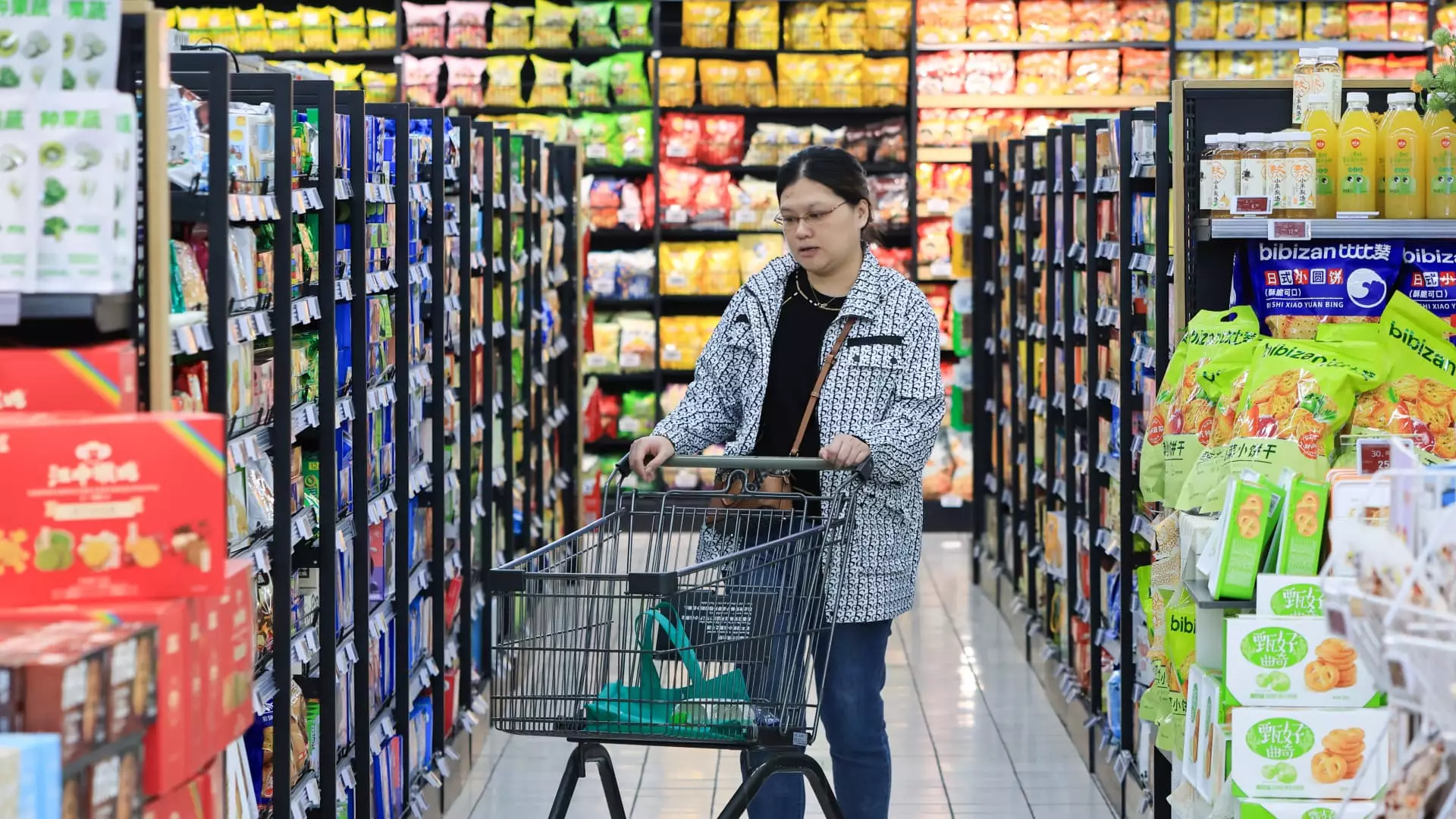In November, China’s consumer inflation rates recorded their lowest point in five months, marking a notable economic juncture. With figures published by the National Bureau of Statistics indicating a modest annual increase of 0.2%, the reality diverged from analyst expectations, which had projected a rise to 0.5% compared to previous data of 0.3% in October. The stagnation in consumer prices is indicative of ongoing challenges that Chinese consumers face. Furthermore, core inflation—which excludes food and energy prices—increased only marginally from 0.2% to 0.3%, underscoring a wider trend of restrained demand and insufficient price hikes to invigorate economic growth.
In this intricate scenario, specific food items have yet seen sharp price increases. Notably, pork—a staple in many Chinese diets—rose by 13.7%, while the cost of fresh vegetables surged by 10%. This disparity in price changes within consumer goods highlights the continuing volatility in food supply chains and the potential socio-economic impacts on Chinese households.
On a broader scale, the Producer Price Index (PPI), a proxy for wholesale inflation in China, has been in decline for a staggering 26 consecutive months. In November, producer prices fell by 2.5% year-on-year, slightly outperforming the expected decline of 2.8%. This persistent deflationary trend raises significant questions about the overall health of China’s manufacturing sector. Specific components within this index reveal more concerning signals, with ferrous metals suffering a steep decline of 7.1%, closely followed by fuel and power, which dropped by 6.5%, and chemical raw materials decreasing by 5%.
Experts, such as Erica Tay from Maybank, emphasize that the entrenched nature of PPI deflation stems from an oversupply situation. The backlog of inventories—comprised of both raw materials and finished goods—reflects a disconnect between supply and demand, which serves to further suppress prices. Consequently, while the retail market struggles with stagnant growth, the wholesale market wrestles with a glut of unwanted goods.
Despite the alarming inflation trends, the Chinese government has deployed a series of economic stimulus measures since September, including interest rate cuts and efforts to prop up both the stock and property markets. Yet, these actions have not spurred an uptick in consumer demand, leading to concerns over the effectiveness of such measures. Analysts like Becky Liu from Standard Chartered underscore the potential for ongoing deflation, particularly in light of historical precedents during trade disputes with the United States. The cyclical nature of trade tensions and subsequent economic adjustments indicate that Chinese inflation rates may remain stubbornly low, with predictions suggesting that PPI deflation could persist into 2025.
The ongoing struggle to reignite domestic demand presents a significant challenge for policymakers. Notably, while certain sectors such as retail and manufacturing have shown some brighter sparks—increased retail sales and manufacturing activity expanding for two consecutive months—the underlying pressures of deflation imply a fragile recovery.
As China prepares for its annual Central Economic Work Conference, keen attention will focus on the guidance provided regarding economic objectives and potential stimulus strategies for 2025. Recent downgrades in GDP growth forecasts—by agencies like Fitch Ratings—serve as a somber reminder of the complexities ahead. Their projections for 2025 and 2026 indicate a decline from previous growth estimates, influenced largely by expectations of stricter U.S. trade policies.
Overall, while transient signs of stabilization have emerged in sectors such as real estate, the overarching risk posed by a prolonged downturn in the property market cannot be overlooked. The way forward for China’s economy will require a multifaceted approach involving careful navigation of both domestic policies and international trade relationships—a balancing act made even more intricate against the backdrop of deflation and lukewarm consumer sentiment.


Leave a Reply